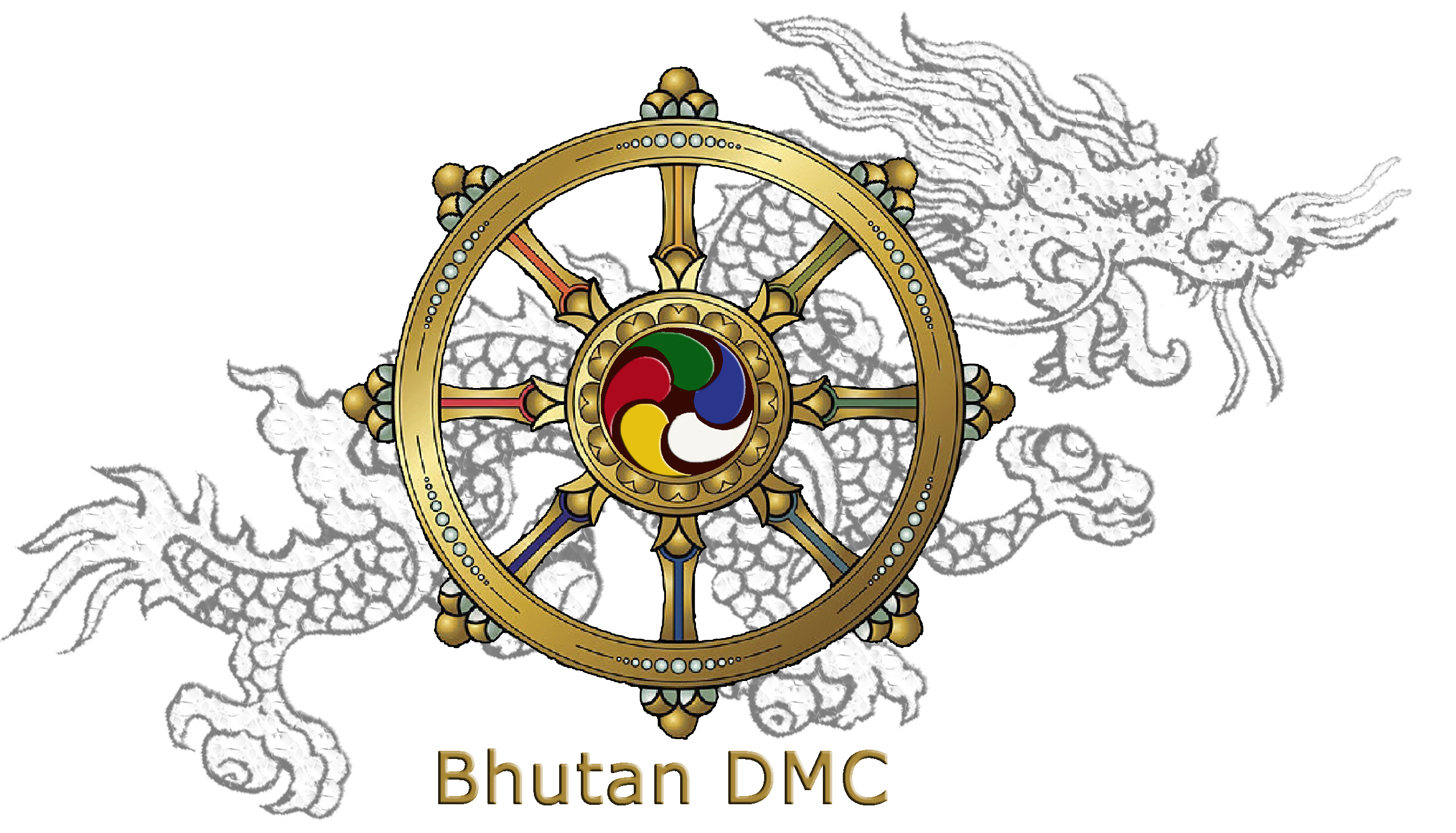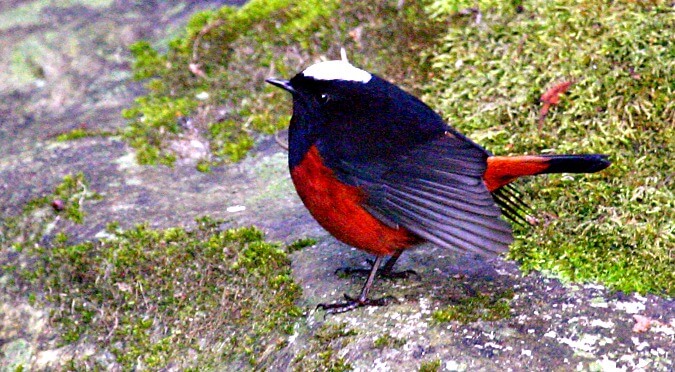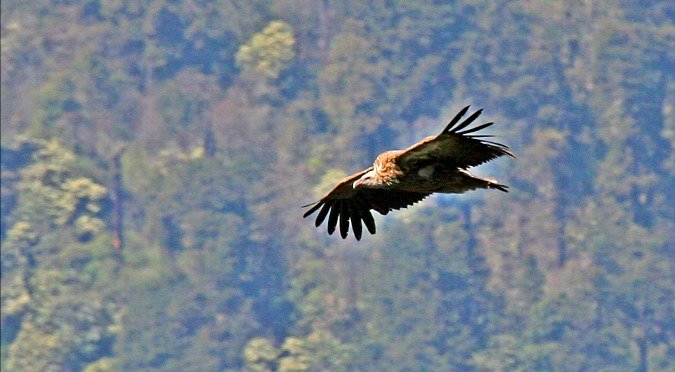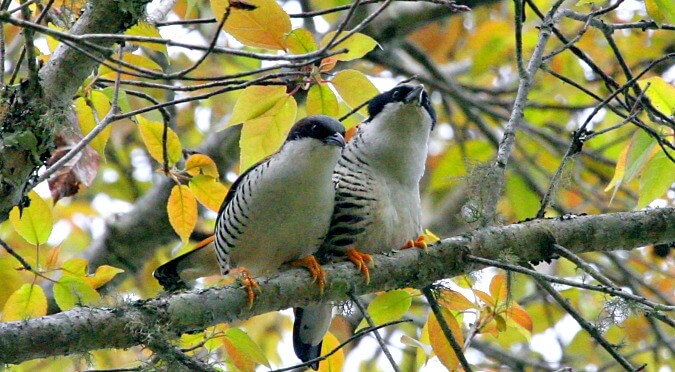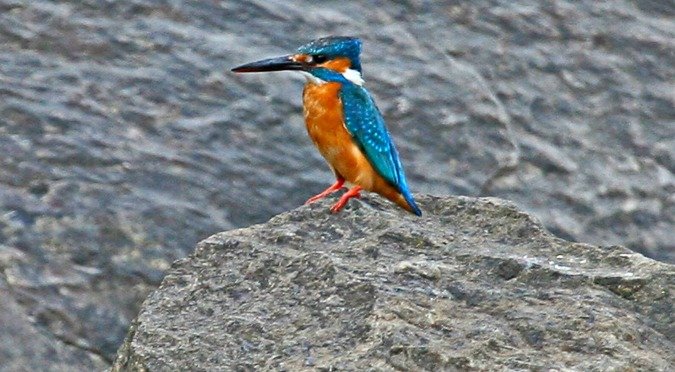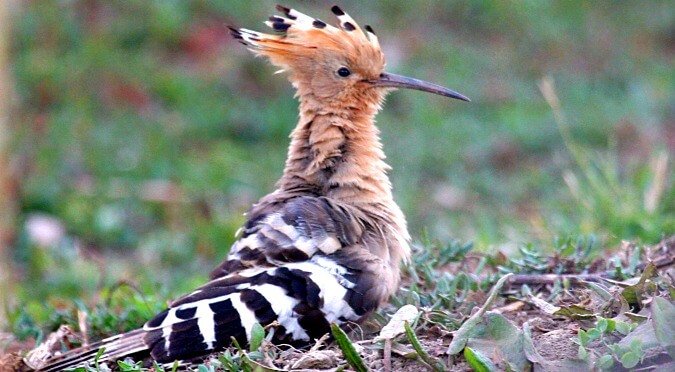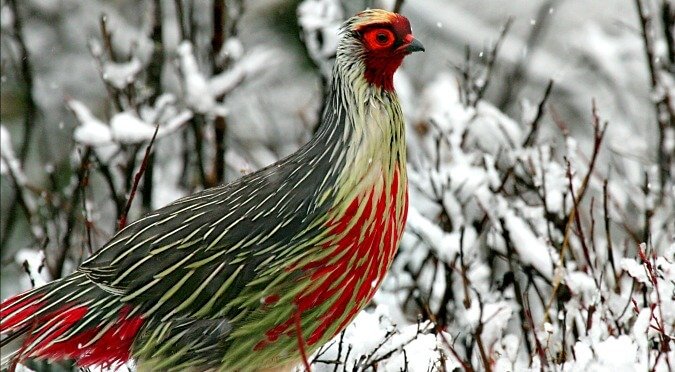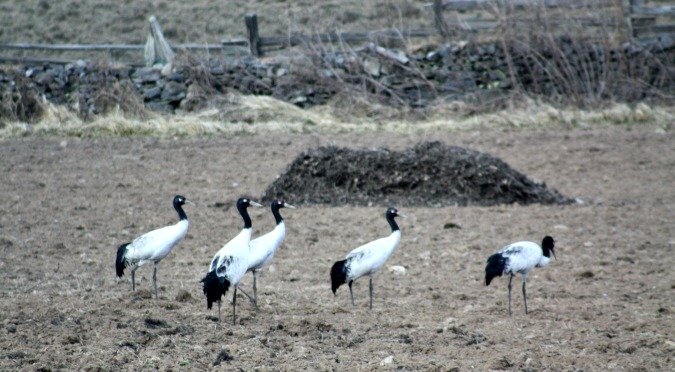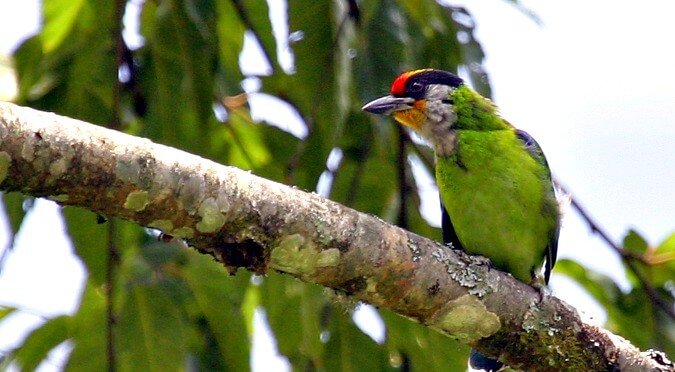Nestling in the heart of the Himalayas and protected by a complex geography of high mountains and deep valleys, Bhutan is rated as one of the ‘top ten global hot spots’ of the world. Still today, the proportion of land under forest cover is around 72%, including shrub forest and an estimated 770 species of birds inhabit the unspoiled forests. One of the important features of Bhutan is that birding, especially in mid to late spring (late March to mid-May) is good virtually everywhere. Unlike many parts of Asia, one is not obliged to seek out a park or reserve or remnant patch of ‘good looking’ habitat, and at any stop, even in the midst farmland, exciting birds are visible.
Day 1
Arrive Paro by Flight
The flight to Paro is one of the most spectacular in entire Himalayas. Whether flying along the Himalayan range from Kathmandu or over the foothills from Kolkatta, the journey offers fascinating views and an exciting descent into the Kingdom. Bhutan’s first gift, as you disembark from the aircraft will be cool, clean fresh mountain air. After immigration formalities and baggage collection, you will be met by our representative, and afterwards transfer to the hotel.
Afternoon visit includes:
Ta Dzong: An ancient watchtower, which now houses the National Museum of Bhutan.
Paro Rinpung Dzong: Literally meaning “Heap of Jewels”, built in 1646. Some of the scenes in the film Little Buddha (1993) were filmed in this Dzong.
Kyichu Lhakhang: This temple is one of the oldest Buddhist temples in Bhutan. The Tibetan King, Songtsen Gompo, to consecrate the entire region of Himalaya, in the 7th century miraculously built 108 temples. Kyichu Lhakhang is considered to be one of them.
In the evening walk around Paro town and valley at your own pace.
Overnight at the hotel in Paro. (Altitude 2,280m)
Day 2
Paro
After breakfast, drive to the base of the Drukgyal Dzong. It was here that the Bhutanese finally defeated the invading Tibetans and drove them back. Peak of Jumolhari ‘Mountain of the Goddess’ can be seen on a clear day from here (7,329 mts/24,029 ft.).
The valley of Paro is mainly Blue Pine Forests not so favourable for bird life but the woodlands around the Drukgyel Dzong area will provide us a good indication of the great variety that is to come in the next few days. Some of the common species that can be seen in this area include, Black-faced laughing thrush, Chestnut-crowned laughing thrush, Brown Parrot bill, Chestnut-tailed Minla, Common Kestrel, Kalij Pheasant, White-collared Blackbird, Grey-backed Shrike. The more elusive birds that we may just locate are some marshland species such as the Black-tailed Crake and the Solitary Snipe.
Later, we will enjoy an excursion to Taktsang Monastery, one of the holiest monasteries in Bhutan, which was burnt down in 1988 but is now fully restored. Birds that can be seen in the valley here include Blue Whistling Thrush, Hodgson’s and Blue-fronted Redstart, Hoopoe, Rufous Sibia, White-collared Blackbird, Rufous-breasted Accentor, Long-tailed and Grey-backed Shrikes, and Yellow-billed Blue Magpie.
Taktsang, the ‘Tiger’s Nest’ Monastery, appears to cling magically to the sheer rock face 915 metres above the valley. Legend has it that the Guru Padma Sambhava, riding a flying tiger, landed on the cliff when he came from Tibet in the 8th century. There he, and later his follower Dubthok Singye, meditated in a cave around which, 300 years ago, the monastery was built to celebrate his arrival. We will take our time here and are likely to spend most of the time in this wonderful setting and its surrounding forests. On our way up, we will make regular birding stops while enjoying the scenery.
Overnight at the hotel in Paro. (Altitude 2,280m)
Day 3
Paro – Chele La Pass – Thimphu (121Km, approx. 4-hour drive)
Early morning embark on a fascinating journey to Chelela pass (3,780m). The road winds upwards through blue pine forests which slowly changes to higher elevation conifers such as spruce, hemlock, silver fir, juniper and finally at the summit the vegetation is mainly dwarf rhododendrons and open alpine meadows. Apart from fascinating views of Paro and Haa valley, from Chelela, we also get fantastic views of the sacred Mt. Jhomolhari (7,314m) and the adjacent Jichu Drake (6,797m).
The quest for the day will be the incredibly majestic Monal Pheasant which is one of the most colourful and strikingly patterned of all the world’s many pheasants. Here, the other typical species include Eurasian Sparrowhawk, Grey Nightjar, Yellow-billed Blue Magpie, Spotted (or Eurasian) Nutcracker, Long-tailed Minivet, Coal, Grey-crested and Rufous-fronted Tits, Black-faced Laughingthrush, White-browed Fulvetta, Rufous-vented Yuhina, Rufous-gorgeted Flycatcher, Buff-barred Warbler, Red-flanked Bluetail, Blue-fronted Redstart, Long-tailed Thrush, White-collared Blackbird, Mrs Gould’s Sunbird, Oliver-backed Pipit, the huge Collared Grosbeak, White-winged Grosbeak, and White-browed and Dark-rumped Rosefinches. With a bit of luck, we will find some Altai Accentors lingering in their winter quarters.
After lunch, proceed to Thimphu, the modern capital town of Bhutan, en route taking a short stop at Chuzom, the confluence of Paro and Thimphu rivers.
Later at the afternoon, in Thimphu, visit:
King’s Memorial Chorten: continuously circumambulated by people, murmuring mantras and spinning their prayer wheels. Construction of this landmark was the idea of Bhutan’s third king, His Majesty Jigme Dorji Wangchuk (“the father of modern Bhutan”) who has wished to erect monument to world peace and prosperity. Completed in 1974 after his untimely death, it serves both as a memorial to the Late King and as a monument to peace.
Buddha Dordenma: It is located atop a hill in Kuenselphodrang Nature Park and overlooks the Southern entrance to Thimphu Valley. The statue fulfills an ancient prophecy dating back to the 8th century A.D that was discovered by Terton Pema Lingpa (Religious Treasure Discoverer) and is said to emanate an aura of peace and happiness to the entire world.
Trashichho Dzong (Fortress of the Glorious Religion): A Doom (Blue Stone) Dzong was built on the hill above Thimphu in 1216 the lama Gyalwa Lhanampa. A few years later Lama Phajo Drugom Shigpo, who brought the Drukpa Kagyu lineage to Bhutan, took over Dohon Dzong. Zhabdrung Ngawang Namgyal (The one who unified the country) acquired the Dzong in 1641 from the descendants of lama Phajo and renamed it as Trashi Chhoe Dzong. The Dzong is the seat of the national government and the central Monastic Body, including the summer residence of the Je Khenpo (Chief Abbot of Bhutan) at present.
Evening, exploratory walk around Thimphu main street, visiting the government-run Handicrafts Emporium and local crafts bazar, to browse through example of Bhutan’s fine traditional arts. Here you can buy hand-woven textiles, thangkha paintings, masks, ceramics, slate and wood carvings, jewelry, interesting items made from local materials.
Overnight at the hotel in Thimphu. (Altitude 2,320m)
Day 4
Thimphu – Gangtey (150 Km, approx. 5-hour drive)
Early morning proceed on a Bird watching tour of Thimphu valley. Relatively dry, the Thimphu valley is surrounded by fine stands of Blue Pine and temperate evergreen forests. The increasing human settlement has pushed birding spots at least 10 kilometers further and now the ideal areas for birding are around the stream near Motithang and in and around Begana and Cheri villages.
Some of the bird species here include
Blyth’s leaf Warbler, Black earned Kite, Blue whistling Thrush, Brown Parrotbil, Common Myna, Common Sandpiper, Common Kestrel, Eurasian Hobby, Fire tailed Sunbird, Greater short toed LarkGolden spectacled Warbler, Grey backed Shrike, Hodgson’s Redstart, Laughing Thrush, Long tailed Minivet, Oriental Skylark, Oriental turtle Dove, Oriental white eye, Red rumped Swallow Rufous Sibia, Ruddy breasted Crake, Spotted throated Yuhina, White browned Fulvetta, White capped Redstart, Yellow breasted Greenfinch, Brown Dipper, Black Eagle, Blyth’s Pipit Black browed Tit, Coal Tit, Common Buzzard, Eurasian Hoopoe, Eurasian sparrow Hawk, Grey bush Chat, Grey Wagtail, Grey sided Bush Warbler, Leomn rumped Warbler, Mountain hawk Eagle, Oriental honey Buzzard, Olive backed pipit, Plumbeous water Redstart, Rusty flanked Treecreeper, Red billed Chough,Rock Pigeon Spotted laughing Thrush, Tickell’s leaf Warbler, Whiskered Yuhina, White throated laughing Thrush.
Then drive to Gangtey across Dochula pass (3,080m) which offers most spectacular view over high peaks of eastern Himalayas.
After lunch stop at Wangdue Phodrang, continue journey eastwards through Black Mountains region. The drive is relatively shorter and there are regular stops for birding and photography along the way. The road finally enters to forest of oak and rhododendron and then broad Phobjikha valley which is one of the few glacial valleys in Bhutan.
We can make a series of brief stops to scan the river channel en route. We may see Pallas’s Gull and Pallas’s Fishing Eagle here and add a number of other species to our Bhutanese
Evening explore fascinating Gangtey village.
Overnight at the hotel in Gangtey. (Altitude 3,000m)
Day 5
Gangtey
The fascinating village of Gangtey sits on the ridge overlooking the large green expanse of the Phobjikha Valley. A large flock of Black-necked Cranes winters here, making this valley one of the most important wildlife reserves in the country.
We will check forest edges and explore some of the small patches of cultivation then continue our search in areas of productive forest near the end of our journey; here we will be looking for species such as:
Blood Pheasant, Satyr Tragopan and the majestic Himalayan Monal. Past highlights at this location have included Himalayan Honeyguide, Crested Kingfisher, Tibetan Serin, Short-billed Minivet and Rufous-bellied Bush-robin. Spotted Laughingthrush, Yellowish-bellied Bush-Warbler, Rusty-flanked Treecreeper, White-browed Bush Robin and White-winged Grosbeak.
Afternoon visit the Gangtey Gompa. Perched on a small hill that rises from the valley floor, the Gangtey Monastery is the only Nyingmapa monastery on the western side of the Black Mountain’s and also the biggest Nyingmapa monastery in Bhutan. The Monastery is surrounded by a large village inhabited mainly by the families of the 140 Gomchens who take care of the Monastery.
Also visit Black Neck Crane Information Centre. Situated on the edge of the forest and wetland along the main road of Phobjikha valley, the black-necked crane information Centre has an observation room equipped with high power telescope and spotting scopes for catching the best view of the cranes. The centre also offers display information that outline the natural and cultural history of the area. There is a small gift shop, which sells handicrafts produced by the local people.
Overnight at the hotel in Gangtey.(Altitude 3,000m)
Day 6
Gangtey – Punakha (85 Km, approx. 3-hour drive)
After breakfast, drive to Punakha. The road passes through a temperate type of leafy forest where rhododendron and magnolia bloom in March and April then a semi tropical zone where orange trees, banana trees and cactuses are found in abundance.
Until 1955, Punakha served as capital of Bhutan and still it is winter seat of Je Khenpo, the Chief Abbot.
Before entering Punakha town en route take a short excursion to Chimi Lhakhang: Situated on a hillock in the centre of the valley, this temple is dedicated to Lama Drukpa Kuenley, who in the late 15th century used humour, songs and outrageous behaviour to dramatise his teachings and due to this also known as ‘Divine Madman’. This temple is also known as the temple of fertility. It is widely believed that couples who do not have children and wanting one, if they pray at this temple, they are usually blessed with a child very soon.
After lunch, visit the Punakha Dzong: Built strategically at the junction of Pho Chhu and Mo Chhu rivers in 1637 by Shabdrung Ngawang Namgyal to serve as the religious and administrative centre of the region, Punakha Dzong has played an important role in Bhutan’s history. Damaged by four catastrophic fires and an earthquake, the Dzong has been fully restored by Fourth King.
Later in the evening, visit Sangchhen Dorji Lhuendrup Lhakhang nunnery: Perched on a ridge amid pine trees and overlooking valleys of Punakha and Wangduephodrang, gleams the magnificent structures of Sangchhen Dorji LhuendrupLhakhang(Temple). The temple houses a 14-foot main bronze statue of Avalokiteshvara (Chenrigzigchagtongchentong). The temple complex also houses a permanent higher learning and meditation centre for nuns where, apart from religious trainings, it provides life skill training such as tailoring, embroidery, statue making and thangka painting.
Overnight at the hotel in Punakha / Wangdue. (Altitude 1,300m)
Day 7
Punakha (Tashithang valley excursion)
Here, at an elevation of approximately 1,400 metres, it is noticeably warmer than at most of the elevations encountered so far on the tour. As a consequence, bird activity is at its greatest in the cooler early morning.
We will spend most of the morning birding along a broad track that follows the thunderous Mo Chu River through delightful tracts of broad-leaved forest. The Mo Chu River and its stony banks and islands often harbour many of the special birds that make Himalayan rivers such a joy for birdwatchers. Plumbeous Redstarts and White-capped River Chats feed from boulders, Brown Dippers flash noisily up and down, Blue Whistling Thrushes look rather ungainly, and less demonstrative species such as River Lapwing, the giant Crested Kingfisher, Slaty-backed Forktail and Ibisbill may also be found. We will be focusing on nesting Ibisbill, the very rarely observed and globally threatened White-bellied Heron, River Lapwing, Red-headed Trogon, Grey-headed Woodpecker, Striated Bulbul, the glowing Little Niltava, all three tesias (the Chestnut-headed is a gem), Pygmy Blue-Flycatcher, Pygmy Wren-babbler, the infrequently seen and very striking Rufous-chinned Laughingthrush, Red-faced Liocichla and the stunning Scarlet Finch. The Tashitang Valley is a truly beguiling spot, full of wonderful colours and soul enriching scenery.
In the forest we may see Himalayan Swiftlet, Great Himalayan, Blue-throated and Golden-throated Barbets, Greater and Lesser Yellow-naped Woodpeckers, Maroon Oriole, Ashy and Hair-crested Drongos, and a wide variety of attractive Himalayan flycatchers, leaf warblers, flycatcher-warblers, nuthatches, flower peckers and sunbirds. Among the more unusual forest species recorded here are Bay Woodpecker, Long-tailed Broadbill, Red-headed Trogon, White-gorgetted Flycatcher and Yellow-vented Warbler, perhaps the most stunning of the leaf warblers (of the genus Phylloscopus).
We will then return to Punakha and later in the afternoon explore farther along the river, where we will be on the lookout for Ibis bill and Bar-headed Geese on the surrounding gravel beds, as well as migrants such as the lovely Ruddy Shelduck. This valley is an important migration conduit, and almost anything could turn up. If we are lucky, we could also see Great Black-headed Gulls and rafts of northern ducks en route to their breeding grounds in Tibet.
Later in the afternoon, excursion to Talo village, which is scattered along the hill slopes and known for its cleanliness and hygiene among Punakha villages. Talo is the seat of the mind incarnations of the Zhabdrung. Talo Sangnacholing Dzong is built on a plateau and has majestic view of surrounding villages. The beautiful farmhouses of the village have its own flower gardens and on the hill slope corns and sweet peas are grown in abundance. Spend time at Nobgang and Talo villages visiting farmhouses and meeting families, experiencing Bhutanese rural life.
Also visit Nalanda Buddhist Institute. Locals call this place ‘Dalayna’ and the monks call it Nalanda Buddhist College. The Nalanda Buddhist Institute is a monastic school near the village of Talo, above the Punatsangchu river. Here you’ve opportunity to interact with monks, for knowledge on Buddhism, process of meditation.
Overnight at the hotel in Punakha / Wangdue. (Altitude 1,300m)
Day 8
Punakha – Paro (125 Km, approx. 4-hour drive)
After breakfast, a beautiful hike takes one to the regal Khamsum Yuelley Namgel Chorten (approx. 2 hours round trip walk), which was built to remove negative forces and promote peace, stability and harmony in the changing world. The Chorten dominates the upper Punakha Valley with commanding views across the Mo Chhu and up towards the mountainous peaks of Gasa and beyond.
Then drive back to Paro descending down from Dochu La, follow the way back up the dramatic Wang Chhu and Paro Chhu river valleys, before crossing through Paro Town towards the north end of the valley.
En route visit Simtokha Dzong, the oldest fortress of the country built in 1627 which now houses the School for Buddhist studies.
On arrival in Paro, check into the hotel.
Later in the evening, drive to Lango village to experience rural Bhutanese life. A visit to Farmhouse is very interesting and offers a good glimpse into the lifestyle of a farmer. Bhutanese farmhouses are very colorful, decorative and traditionally built without the use of single nail. All houses follow the same architectural pattern.
Overnight at the hotel in Paro. (Altitude 2,280m)
Day 9
Depart Paro
After breakfast, transfer to the airport for flight to onward destination. Our representative will assist you with exit formalities and bid you farewell.
